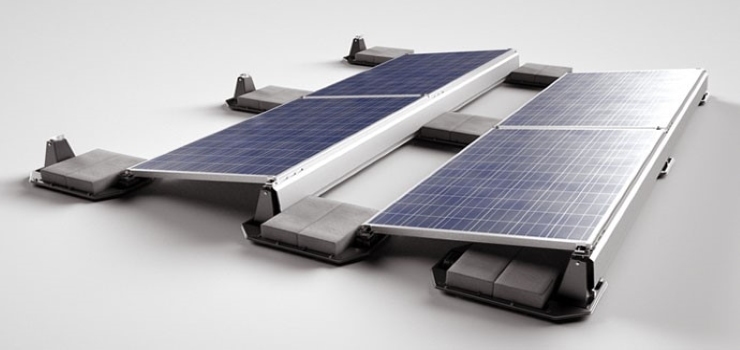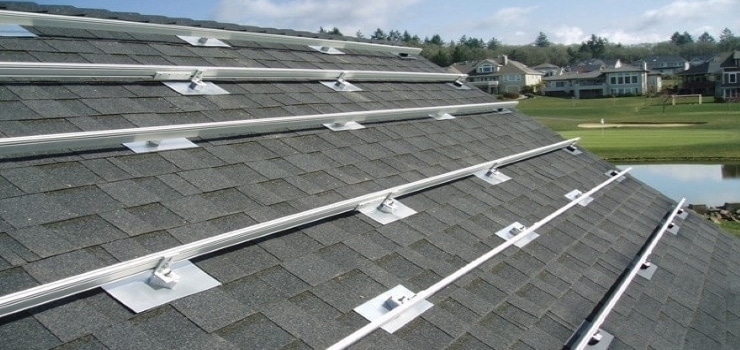Can Solar Panels Damage My Roof?
Page Contents
Written by qualified solar engineer Carlos. Last updated:
Solar panels will not damage your roof if the installation is performed properly by a certified NABCEP solar installer. However, improvised installations where the proper materials, technics, and calculations are not carefully considered could mean damage to the roof of any household – eventually leading to leakages or even a collapse of the structure.
As solar panel installations spread throughout the country, it is more likely to see homeowners asking themselves if installing solar panels will damage their roof. Having solar panels installed is expensive so you don’t need the issue of paying for roof repairs aswell further down the line, which is why it is wise to make sure your solar panels won’t cause any damage to your roof.
Let’s see some of the mounting options available for solar panels and discuss this topic further.
Solar Panel Mounting Options
First, you must know that there mainly two types of mounting systems for solar panels: ground-mounting and roof-mounting.
Ground-mounting systems are installed on the ground, mainly in backyards of households or in wide land-farms. These types of systems have several advantages like easy maintenance, good cooling systems, and flexible designs. However, they also offer some disadvantages such as low installation times, high costs, and backyard use of land that could be used for recreation.
When visualizing the pros and cons of ground-mounting systems, you may want to opt for rooftop PV systems. These can offer you a set of advantages such as:
- Fast installation times
- Low installation costs
- PV system is hard to reach for any unauthorized personnel
- Can increase the value of the household
- Protection for your roof
- Better sun exposure
As you can see, one of the advantages of rooftop systems is that they protect your roof, so could it be possible that they also damage it? Let’s take a look at the installation procedure on rooftop systems.
Installation Procedures on Rooftop PV Systems
There are two main types of installation procedures on rooftops for PV systems.
The first and most common for commercial applications is the ballasted footing mount system. This applies for commercial buildings or even some households that have a flat roof. This is the most ideal combination between roof and ground-mounted systems, because the PV system is able to combine the advantages of ground-mounted systems with those of rooftop systems.
Basically, it consists of pre-cast concrete blocks or steel structures anchored to the roof that can be placed on any position and angle. Generally, these flat roofs are made of concrete, so the engineers can ensure that the roof withstands the weight of the solar panels and the ballasted mounting system. You can take a look at an innovative flat roof mounting system design here.

Ballasted mounting system with concrete blocks (Source – Solar Panels Plus)
The second option, most common for residential US households is the sloped rooftop mounting. This option can be divided into several installation procedures:
Rail-Less Mounting Systems: This system does not use any rails to attach the modules to the sloped roof. Instead, it directly uses screws and bolts to attach the solar panels to the tiles. This type of system is less frequent now because it involves more penetrations to your roof, installation times are slow, and it can damage a tile by lifting it up with the force of the wind.

Rail-less PV system (Source – Solar Power World)
Railed Mounting System: Attaches a set of rails to the rooftop by penetrating the roof and using screws and bolts. Each solar panel can be attached to the rails using a set of clamps.
Shared-Rail: A variation of the railed mounting system. If the PV array needs several rows of modules, then these can be put together and use a single rail to act as the support of two rows. This system simply eliminates the use of one rail to optimize the installation.
Here you can take a look at a detailed explanation of a railed mounting system installation.

Railed-PV system (Source – Quick Mount PV)
How Does my PV System Affect the Roof?
Installing solar panels on a roof may not see to carry much calculations and numbers, but in fact, there are a set of variables that must be measured if you want your PV system on your roof.
Solar panels can be very heavy. Weight variations can go from 15 kg to 30 kg depending on the panel size and power output. As you can imagine, if you have 10-15 modules on your roof, that is a considerable extra weight that your roof must be able to endure every day over 25 years.
That is why US regulations demand that a structural engineer checks your roof before the installation takes place. The structural engineer must take into account the age and current condition of the roof to make the installation. If the roof is very old, if there is a presence of termites, or if there are weaknesses in some spots, then the structural engineer will recommend that you make some upgrades to your roof.
These upgrades can be expensive depending on what it needs to be done, but it would be more expensive to install a new PV system on a roof that will eventually fall apart. Moreover, State regulations may require that you upgrade or check the conditions of your roof within a certain time period. If the roof needs to be replaced or improved in the next 10 years, then it is better to do it before installing the PV system.
Also, the structural engineer must take into account other things besides the distributed weight of the solar panels on the roof. He/she must also measure the impact of heavy snow, hail, and wind loads that will add additional weight that the roof must resist. State regulations will vary depending on the specific load design conditions according to weather conditions of the location. Seismic loads must also be taken into account in States like California.
Another important fact to take into account, especially if the roof has tiles, is to consider the uplift force of the wind with the solar panels attached to the roof. Uplift forces can reach up to 500 pounds per module on the roof, which could easily remove loose tiles. If you live in a state that often gets high speeds of windy weather, maybe consider solar shingles for your roof instead.
All of these considerations are important and cannot be easily addressed without an approved structural or civil engineer in place. PV sloped roof installations also need to make penetrations on the roof to attach the rails of the mounting system. It is essential that the PV installer uses a sealant to protect your roof against leakages in the future.
Despite all of these considerations for rooftop PV systems, we also mentioned that they can protect the roof. Hail, snow and other objects can damage your roof as well. However, by installing a PV system, you are assuring that the covered area of the roof will not be damaged by harsh weather conditions. Moreover, it has also been proven that solar panels reduce the heat inside the house because the roof does not directly receive the solar radiation, which improves the thermal conditions of the structure.
Basically, we must say that installing a PV system on the roof, does involve a technical process that, if not taken seriously, can definitely damage your roof. Therefore, it is very important that a certified structural engineer approves the installation.
Obtaining the approval of a certified structural engineer and making sure that the solar installer uses sealant during the installation is pretty much a guarantee that your roof won’t suffer any damage over the 25-year period of the PV system.
References
We hope you liked this article. Please rate it or leave us a comment.
Average rating 5 / 5. Vote count: 5
No votes so far! Be the first to rate this post.





